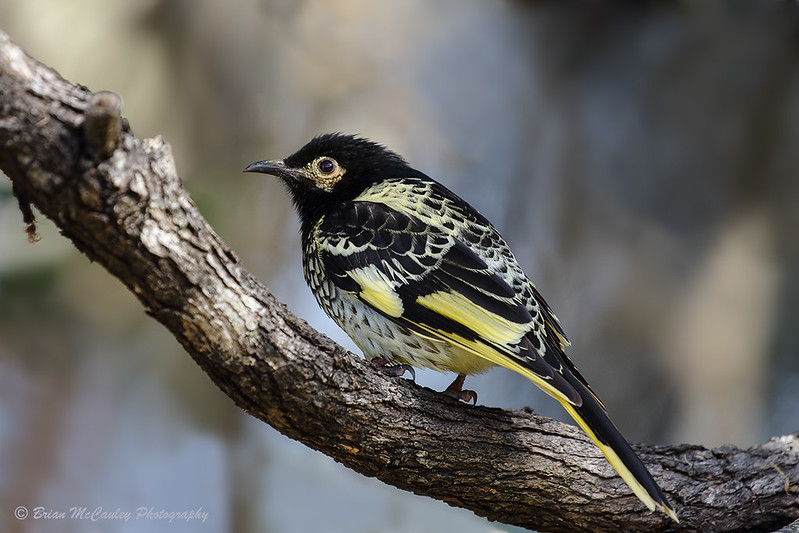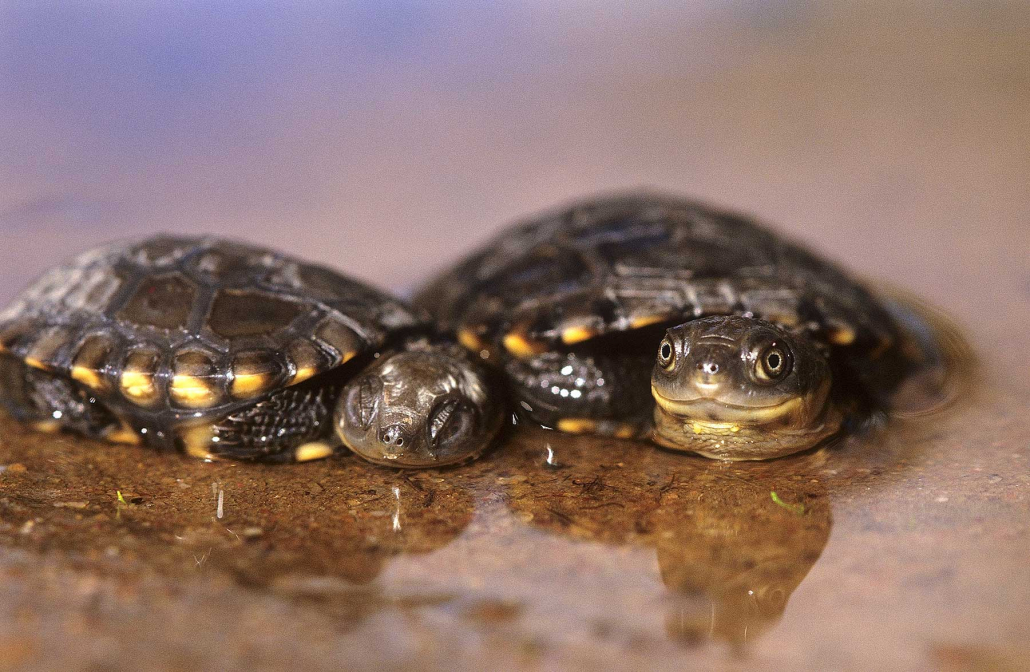Nurturing nature in our towns and cities
One of Australia’s most critically endangered bird species, the regent honeyeater, can be found feeding on eucalypts in an urban park in the inland city of Albury. There are only an estimated 400 regent honeyeaters left in the wild, so it might feel at odds to find such a rare bird in such a human-centred environment. But along the Murray River in the Albury area there’s an established woodland made up of trees called mugga ironbark and yellow box, which the regent honeyeaters happily seek out to feed on.
Regent honeyeaters aren’t alone in their city visits – in Australia, around 370 threatened plant and animal species share their habitat with urban areas. Of these, 39 threatened species are found only in cities in towns. Cities are home for threatened species the world over too, with one study finding that almost a third of cities across the globe are home to threatened bird species.
Yes, urban areas see plenty of the usual suspects like gulls, feral pigeons and rats – but flying foxes, koalas, rare orchids and so many other native plants and animals also live in habitats near and in towns and cities. This is why it’s vital that conservation planning and urban development should consider urban nature too.

The threat of clearing for housing and development
Urban sprawl describes when towns or cities grow bigger and the boundaries expand. Clearing land for urban development is a major threat to the plants and animals that live in or visit urban areas. One report states that at least 20,212 hectares of forest and woodland habitat was destroyed around the fastest growing cities in southern Queensland and northern New South Wales between 2000 and 2017. The animal species most affected by land clearing include the red goshawk, the grey-headed flying fox, the koala, the Australasian bittern and the regent honeyeater. This is a big blow as many species, like the regent honeyeater, are at risk already.
Other issues include the types and management practices of green spaces found in urban areas. Often these lack diversity of habitats – think large swards of grass that are regularly mown and gardens made up of introduced plants – meaning that fewer native species are able to make themselves at home. Scientists have reported that once-iconic urban bird species, such as galahs and kookaburras, are declining in Australian cities as more aggressive birds take over the range. Noisy minors, for example, thrive in open clear areas and are becoming more common in urban areas. They often drive away other species and upset the balance of the ecosystem, even though they are an Australian bird.
The clearing of koala habitat is one of the key reasons why these Aussie icons are now an endangered species. Can koalas be saved from extinction? from Australian Academy of Science.
So why are urban environments still home to so many species?
One reason you’ll find lots of species in urban environments is simply because they were there already! Urban areas are often established near fresh water and more fertile soils, so they’re highly liveable regions for many living beings. When urban sprawl happens, some animals are driven out and some plants don’t survive – but others manage to stay. For example, one of the few places you can still find the endangered spiked rice flower is on a busy Sydney golf course.
Another reason why threatened species may still exist in urban spaces is that having people around can also attract and protect species. Animals, especially birds, might be attracted to native plants people care for in gardens. If an endangered species lives in a largely populated area, it’s more likely to be found and protected by people, with local communities, governments and conservation groups often coming together to protect and enhance habitats. One example is the endangered western swamp tortoise, which is now only found in a few wetland areas in Perth that are fenced to keep out foxes and feral cats. The active community and a Friends of the Western Swamp Tortoise group come together to look after this threatened reptile and its habitat.

How can we protect urban spaces and create more urban havens?
We can help native birds and all wildlife by increasing local native plants and habitats such as wetlands, grasslands and woodlands in our urban areas, and having planning systems that design natural areas as part of our cities and towns.
Dr Kylie Soanes, a research scientist from the University of Melbourne who specialises in urban nature conservation, said, “While urbanisation is a big part of the problem when it comes to biodiversity loss, improving nature within our urban environments must be part of the solution.”
Australians love nature, and there is a really strong appetite for supporting local species to thrive in the places we live and work. “We need novel solutions to address the unique challenges of saving nature in cities, research to better understand how urban biodiversity is trending, and a culture shift to support cities as spaces for nature as well as people,” Dr Soanes said. For rural Australians, projects that support biodiversity on farms are also vital.
Being immersed in and supporting nature is great for our mental and physical health, for building community connections, and for reducing pollution and greenhouse gas emissions. Spending time in or with nature could mean taking a walk through a park, seeing birds approach a feeder or just taking the time to sit under a tree. We can all find ways to bring nature closer to us, and town planners need to consider how to increase our daily nature interactions too.
Creating more natural spaces in towns and cities really is a win-win for both our own wellbeing and that of the multitude of organisms we share this planet with.






